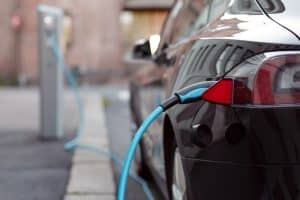
- The Savvy Promise
At Savvy, our mission is to empower you to make informed financial choices. While we maintain stringent editorial standards, this article may include mentions of products offered by our partners. Here’s how we generate income.
Ensuring the safety of your car is paramount for both you and your passengers. In the ever-evolving automotive technology landscape, modern cars come equipped with a variety of safety features designed to protect occupants and prevent accidents.
In Australia, safety standards are stringent, so understanding how safe your car is can greatly influence your driving experience and overall peace of mind on the road. Find out more about the safety of Australian cars and how it’s measured in Savvy’s handy guide.
How do I find out how safe my new car is in Australia?
Wherever you are in Australia, you can easily determine how safe your new car is through the Australasian New Car Assessment Program (ANCAP). ANCAP is the leading authority in vehicle safety assessment for new vehicles entering the Australian and New Zealand markets. It provides a comprehensive rating system that helps consumers gauge the safety level of their vehicles. Here's how you can find out how safe your car is:
- Visit the ANCAP website: the ANCAP website is a valuable resource for car safety information. Visit the website here.
- Search for your car: use the site to find safety ratings for the specific model you’re looking for. You can search by the make and model of your vehicle.
- Check the safety rating: once you find your car model, ANCAP will display its safety rating. The rating is given in the form of stars, with a higher star rating indicating a safer car. This will also display the year your car’s model was last tested.
- Explore detailed reports: ANCAP provides detailed reports for each car model, outlining the results of various safety tests. These reports provide insights into crash test results, safety assist technologies and more.
- Consider the year: keep in mind that safety standards and technologies improve over time. If your car is an older or used model, its safety features might not be as advanced as newer vehicles, while models released in the years since it was last tested may come with a different level of safety.
- Compare with other models: if you're considering purchasing a new car, you can use ANCAP's website to compare the safety ratings of different models. This can help you make an informed decision about which car to choose.
By using the ANCAP website, you can access reliable and up-to-date information about the safety of your car. It's important to prioritise safety when driving, and ANCAP's resources can help you make informed decisions to provide greater peace of mind to you and your passengers on the road. There are also other online resources you may be able to use to determine the safety of your vehicle.
Can I check how safe my used car is in Australia?
While ANCAP ratings can help you gauge the safety of a new car, older models may not have a rating. If you are looking to buy a used car, the Used Car Safety Ratings (UCSR) can offer reliable insights into the car's safety performance. Compiled by the Monash University Accident Research Centre (MURC), the UCSR is updated and released each year, making it easier for you to choose the safest used car within your budget.
Ratings are determined through analysis of millions of reported road incidents across Australia and New Zealand. Each car is given a safety star rating out of five based on the vehicle’s ability to protect the driver, protect other road users and reduce the likelihood of being involved in a crash.
In 2023, used cars given five stars and a ‘Safer Pick’ marker included:
- Volkswagen Polo (2010–2017)
- Kia Cerrato (2018–2021)
- Toyota Corolla (2018–2021)
- Audi A4 (2008–2015)
- Mazda CX-3 (2015–2021)
The majority of Safer Pick cars were newer vehicles manufactured after 2005. This is because newer cars have a greater range of safety features and must also comply with stricter regulatory safety standards.
What safety features should I look for when determining how safe my car is?
Some of the major safety features to keep an eye on when assessing your car’s overall safety include:
- Airbags: front, side and rear airbags provide protection in the event of a collision, cushioning occupants and reducing the risk of injury.
- Antilock Braking System (ABS): ABS prevents wheels from locking during hard braking, allowing the driver to steer while braking and reducing the risk of skidding.
- Electronic Stability Control (ESC): ESC helps maintain control during skids or loss of control by adjusting engine power and applying individual brakes.
- Forward Collision Warning: this system alerts the driver if they're approaching a vehicle or obstacle too quickly, giving them time to react.
- Automatic Emergency Braking (AEB): AEB can automatically apply the brakes if a collision is imminent, reducing the severity of a crash or avoiding it altogether.
- Lane Departure Warning (LDW) and Lane Keeping Assist (LKA): LDW alerts the driver if the vehicle drifts out of its lane, while LKA can gently steer the car back into the lane.
- Adaptive Cruise Control: this maintains a safe following distance from the vehicle ahead by automatically adjusting the car's speed.
- Blind Spot Monitoring (BSM): BSM alerts the driver if there's a vehicle in their blind spot, helping prevent lane-change collisions.
- Rear Cross Traffic Alert (RCTA): RCTA warns the driver if a vehicle is approaching from either side when reversing, making busy carparks easier to navigate627.
- Reverse camera: a rearview camera displays the area behind the vehicle when reversing, assisting with parking and avoiding obstacles.
- Child safety features: child locks for doors and windows, as well as ISOFIX anchor points for child seats, help ensure the safety of young passengers.
What other factors influence safety on the road?
Besides the car itself, several other factors influence safety on the road:
- Driver behaviour: drivers’ actions and decisions play a significant role in road safety. Factors such as speeding, distracted driving, aggressive driving and driving under the influence of alcohol or drugs can increase the risk of accidents.
- Road conditions: poor road conditions, including factors such as potholes, uneven pavement, lack of signage and inadequate lighting, may increase the likelihood of accidents, particularly during adverse weather conditions.
- Weather conditions: adverse weather conditions, such as rain and high winds, can affect visibility and road traction, making driving more hazardous. Drivers need to adjust their driving behaviour and vehicle handling techniques accordingly to ensure safety in different weather conditions.
- Congestion: High levels of traffic congestion can lead to increased frustration, impatience and aggressive driving behaviours among motorists. Traffic congestion also reduces the overall flow of traffic, increasing the risk of rear-end collisions and other types of accidents.
- Enforcement of traffic laws: the enforcement of traffic laws, including speed limits, seat belt laws and drunk driving regulations, is essential for promoting road safety.
- Driver education and training: training programs such as defensive driving courses aimed at improving driver knowledge, skills and attitudes can contribute to safer road behaviour.
Did you find this page helpful?
This guide provides general information and does not consider your individual needs, finances or objectives. We do not make any recommendation or suggestion about which product is best for you based on your specific situation and we do not compare all companies in the market, or all products offered by all companies. It’s always important to consider whether professional financial, legal or taxation advice is appropriate for you before choosing or purchasing a financial product.
The content on our website is produced by experts in the field of finance and reviewed as part of our editorial guidelines. We endeavour to keep all information across our site updated with accurate information.
Approval for car loans is always subject to our lender’s terms, conditions and qualification criteria. Lenders will undertake a credit check in line with responsible lending obligations to help determine whether you’re in a position to take on the loan you’re applying for.
The interest rate, comparison rate, fees and monthly repayments will depend on factors specific to your profile, such as your financial situation, as well others, such as the loan’s size and your chosen repayment term. Costs such as broker fees, redraw fees or early repayment fees, and cost savings such as fee waivers, aren’t included in the comparison rate but may influence the cost of the loan. Different terms, fees or other loan amounts may result in a different comparison rate.









